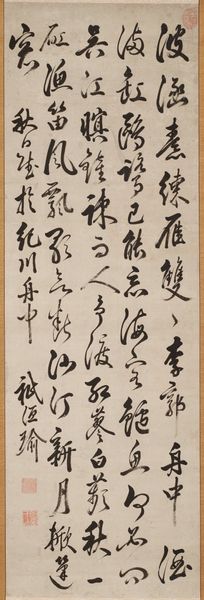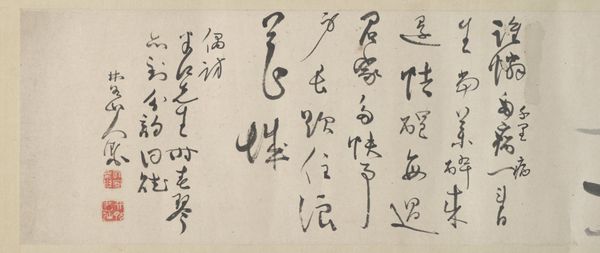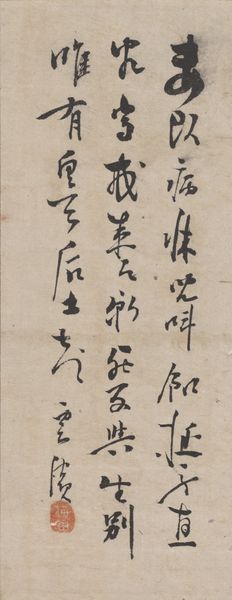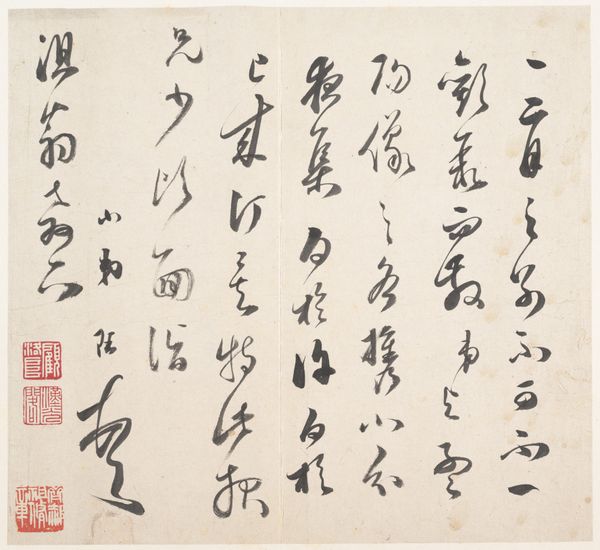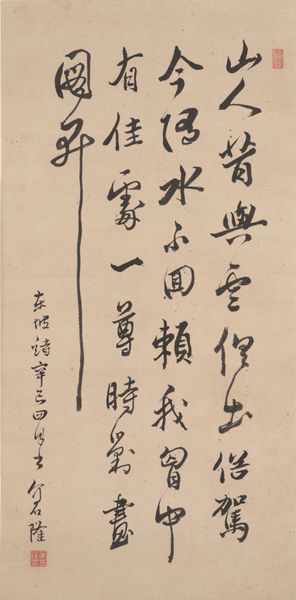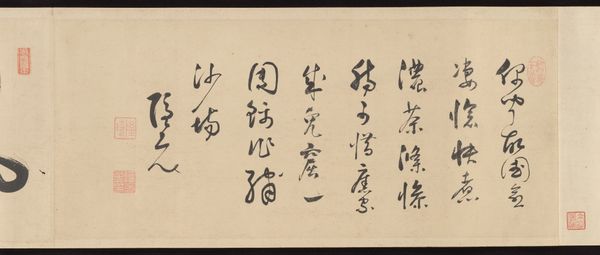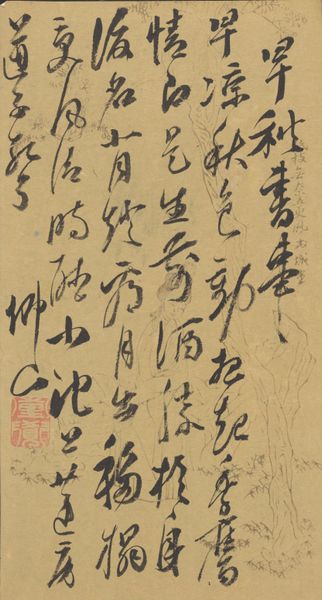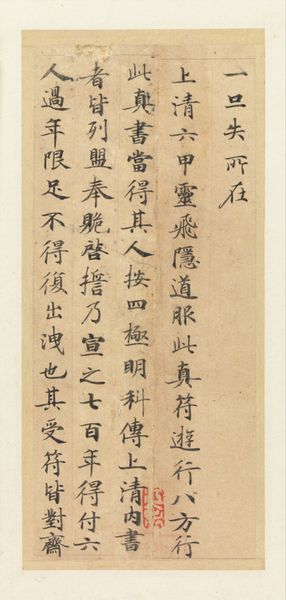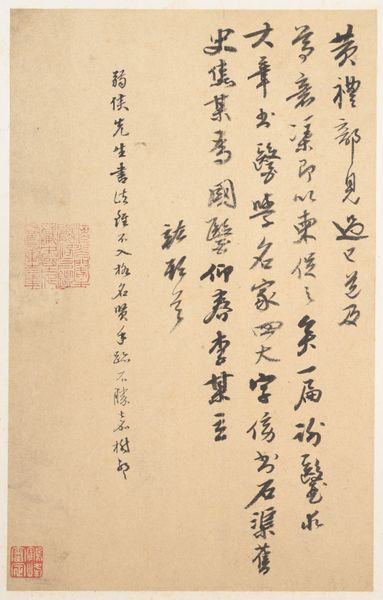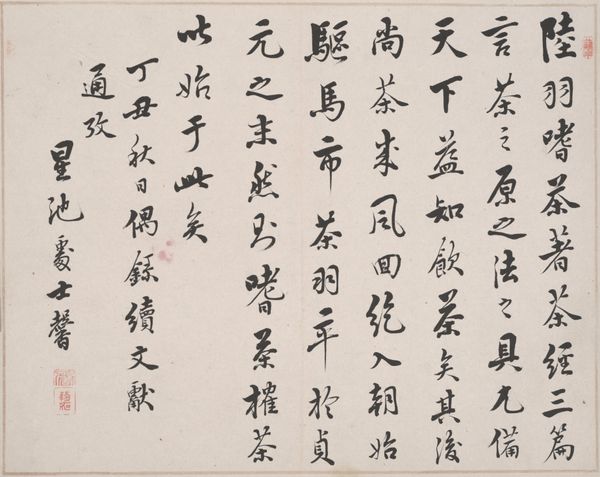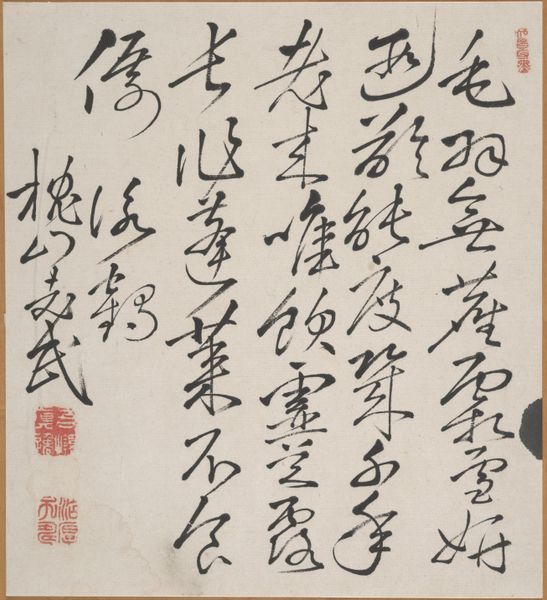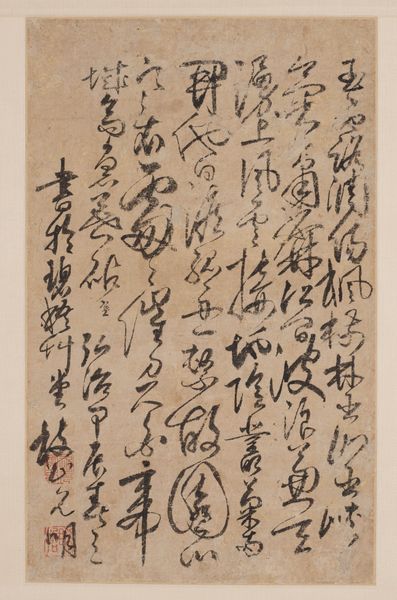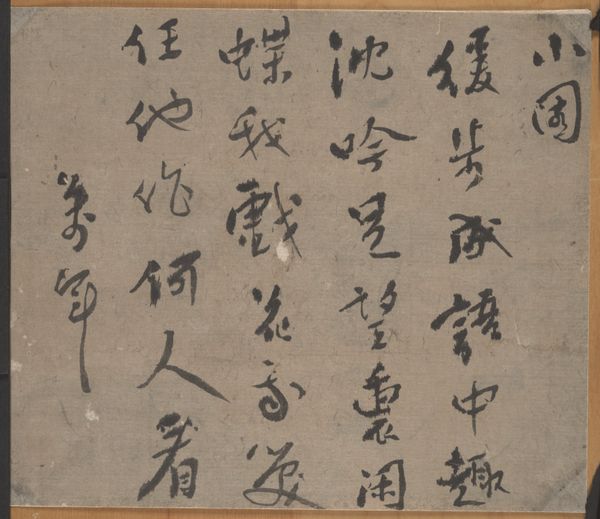
paper, ink
#
asian-art
#
paper
#
ink
#
calligraphic
#
abstraction
#
china
#
calligraphy
Dimensions: 48-3/4 x 15-3/4 in. (123.8 x 40.0 cm)
Copyright: Public Domain
Curator: Before us hangs Wang Shih-hung’s “Commentary on the Peach Blossom Spring,” created around 1700. The piece, executed in ink on paper, resides here at the Minneapolis Institute of Art. Editor: Immediately, I'm struck by its rhythmic flow. The verticality of the script coupled with the varying ink densities produces such a contemplative visual space. There is a real feeling of the materiality being inseparable from the philosophical content. Curator: Exactly. Let's think about the context: Wang was a scholar-official, deeply engaged in calligraphy. Calligraphy, particularly in this 草書 style, often moves away from the rigid perfection promoted to embody a fluid mode of individual expression. Editor: And within that individual expression lies so much cultural encoding! Peach Blossom Spring is more than just an idyllic location, it stands as a complex historical marker. Its narrative is laden with critiques of power and society. Considering what’s valued by that social order informs much of how he approached his craft. Curator: We see here how technique and the final outcome are tightly woven together with material choices and production. It would be interesting to really understand how this scroll making occurs: the grinding of the ink, the sourcing and preparation of the paper, to bring greater appreciation. Editor: Indeed, those processes directly informed how Wang could express not only his technical prowess but also a quiet act of intellectual dissent. Here calligraphy allows an engagement with sociopolitical reflection through the lens of literati culture. Wang engages with the notion of creating these alternate spaces using accessible methods like paper and ink to re-interpret narratives through art making. Curator: Looking at these lines, so precise yet full of energy, this speaks volumes about the cultural values of that time. Editor: Ultimately it invites us to contemplate the intertwining of art, politics, and personal identity. A potent message across time and culture.
Comments
minneapolisinstituteofart almost 2 years ago
⋮
Wang Shih-hung was one of the K'ang-hsi emperor's (1662-1723) favorite calligraphers. A native of Suzhou, he graduated number one in the annual jinshi degree or doctorate examination. Wang was a prolific poet and calligrapher and several collections of his verse have been published. His inscription here is a sardonic commentary on one of China's most revered literary themes: The Story of the Peach Blossom Spring. It reads in part: Mankind, having been informed that a gentleman had become enlightened by viewing peach blossoms, lept forward in unison to sing the praises of the peach blossom. This approach has been reiterated for fifty years and nothing of any relevance is left to enlighten us. This case parallels the story about (the Tang dynasty "wild script" calligrapher) Chang Ch'ang-shih acquiring his method of writing "grass script" by observing a traffic dispute between a porter and a princess. Can one learn Ch'ang-shih's calligraphic style by observing a porter' Written by Wang Shih-hung for Wei Shan-mien, the elder brother of the Way (Tao).
Join the conversation
Join millions of artists and users on Artera today and experience the ultimate creative platform.
